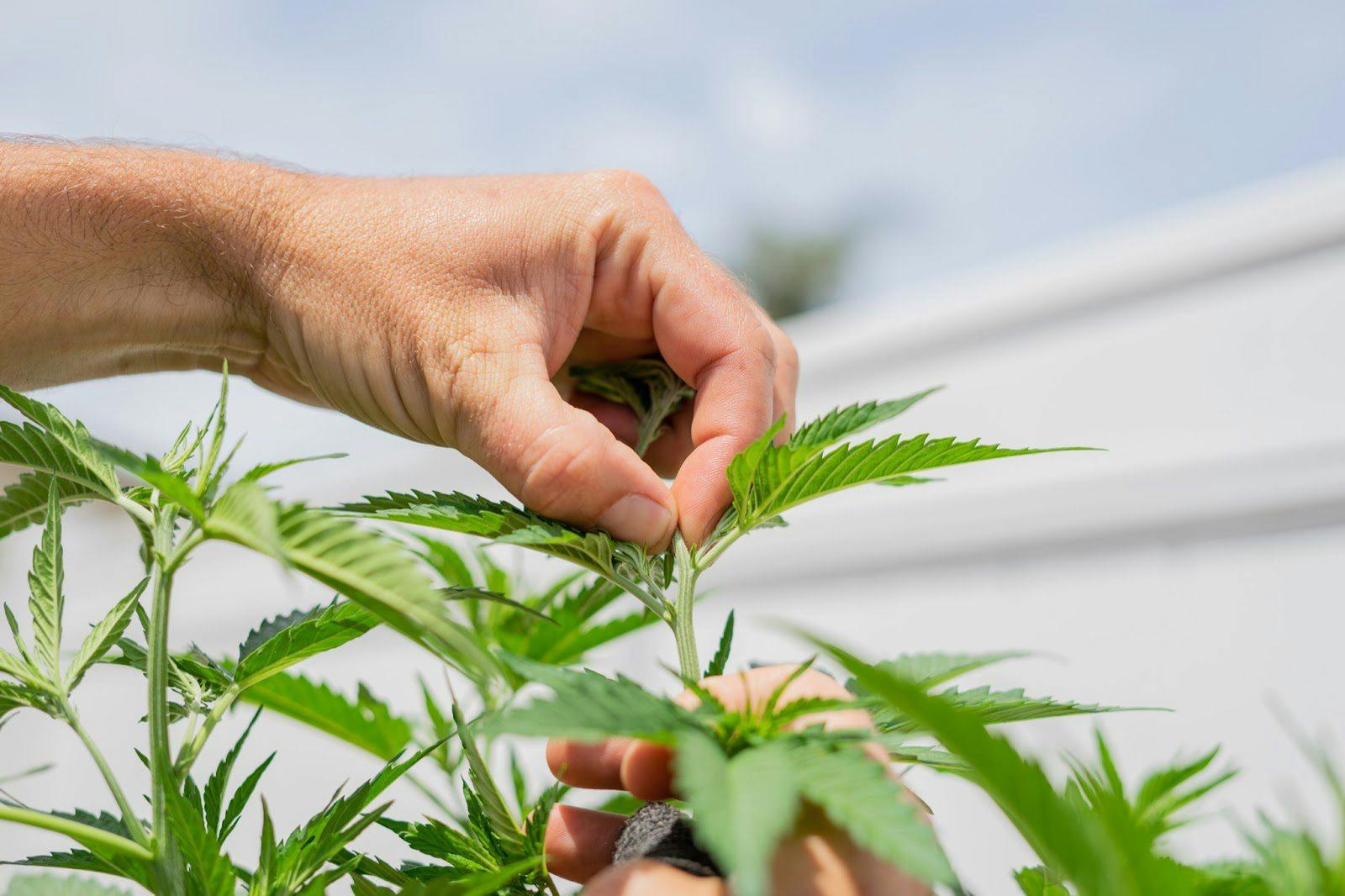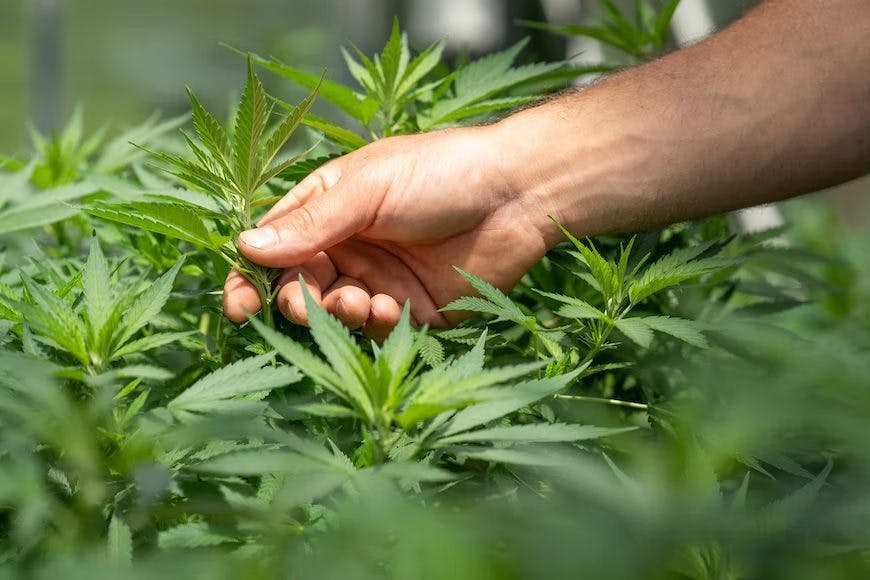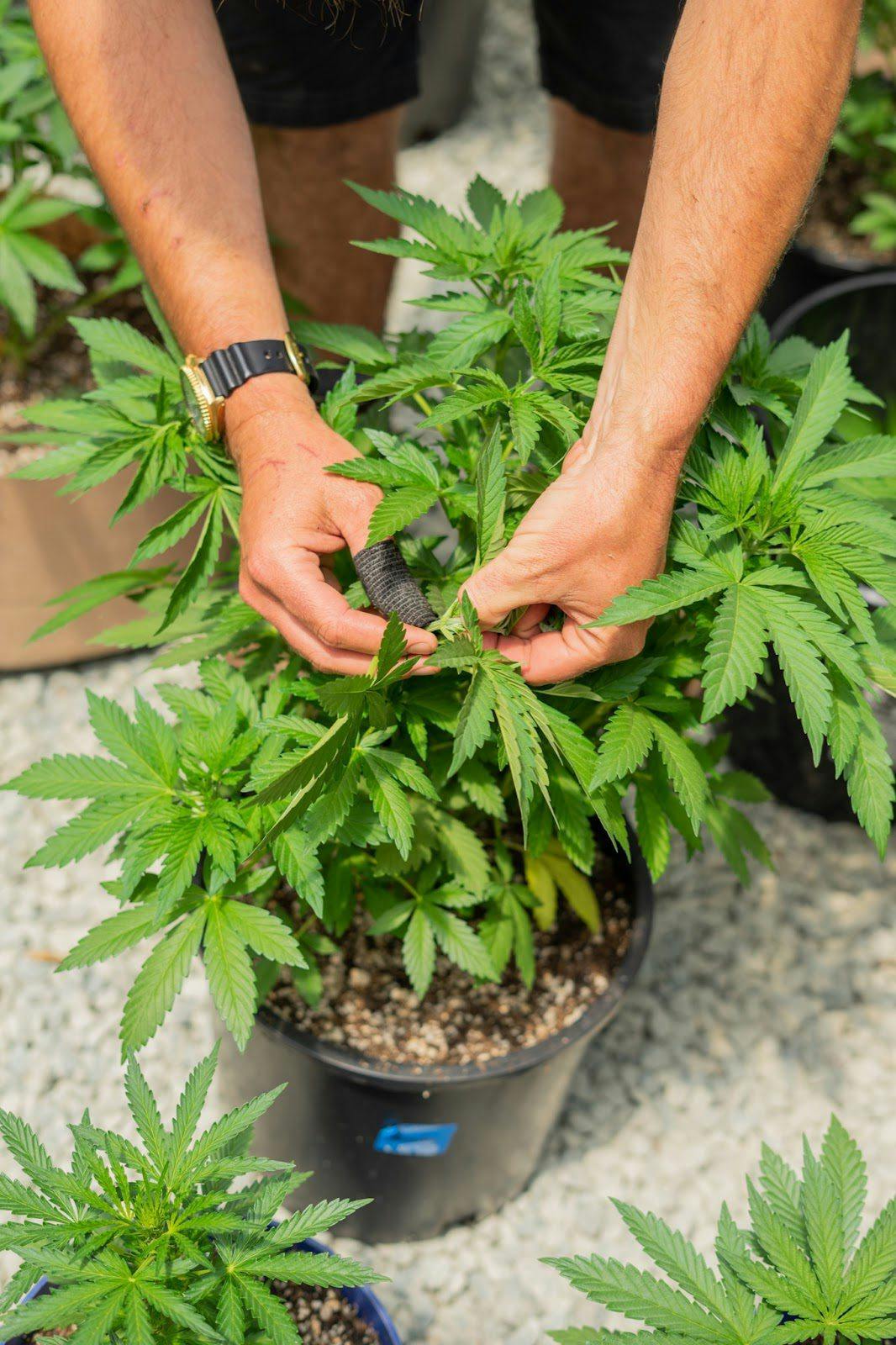Topping Cannabis: Why, How, and When To Do It

Article written by

Homegrown Cannabis Co.American Seed Bank and Cultivation Experts
Content reviewed by

Dr. Lewis JasseyMedical Director - Pediatric Medicine
Topping cannabis lets you achieve bigger yields. You snip the tip of the main stem to create more bud sites and outspread the canopy for better light penetration.
This trick is a favorite among indoor and outdoor cultivators. It increases the harvest potential, decreases the height, and makes the foliage easier to manage. But it also stresses plants, so it takes excellent timing, care, and precision.
Get Your Medical Card
Connect with a licensed physician online in minutes.
What Is Topping?
Cannabis topping is an oft-used high-stress training technique for making plants shorter and higher-yielding. Plant training is a series of methods that change cannabis growth patterns and make them more manageable. We can divide it into two categories:
- High-stress training involves snapping and cutting branches to change how they stretch. It’s a radical technique that puts a lot of pressure on the plant to make it stronger.
- Low-stress training means bending and tying branches instead of breaking them into unnatural shapes. It takes a bit more time to show results, but your plants rebound faster because they experience less damage.
In both cases, the goal is to break the apical dominance of marijuana. The term “apical” describes the Christmas tree shape of an untrained plant. In the wild, weed stretches as tall as possible and sends energy to its uppermost sections to get more light. Its top contains a large and sticky cola for reproduction; we call it the apical or terminal bud.
The tendency is helpful in nature but tricky in weed gardens. If you leave your plants untended, their bottom buds end up much smaller than the ones on top.
When you train, you prevent the main cola from stretching and hoarding all available energy. The plant responds by sending more growth hormones to its bottom parts, developing laterally instead of vertically. The way you control the stretching varies between types of training.
While topping, you cut off the top of the main stalk, and it splits into two individual stems. Both develop a sizable new cola in the flowering stage, and you get a bigger yield without needing additional space.

Topping vs. Fimming
Fimming is another technique used to increase the number of colas and yield size. It’s similar to topping in idea and appearance, but not quite the same.
The name stands for “f*ck, I missed” and refers to how sloppy this method appears. It involves pinching and removing around 75% of the tip of the plant: like you tried to top and missed.
Instead of producing two stems, this approach leaves you with four or more new branches. Each develops and fattens a separate apex cola in flowering.
Fimming is a more efficient yield booster than topping, but it’s less precise. The snip must be accurate to get the branching pattern; rookies often end up harming the plant with no benefit. It’s also less successful at managing height, as fimmed weed plants still grow rather tall.
Topping is better for growers with large plants and lofty harvest ambitions. Fimming is suitable for advanced cultivators looking to experiment. It’s also excellent for micro-growing, as it maximizes the yield potential of limited spaces.
Why Is Topping Cannabis Important?
Topping isn’t a necessary element of cultivation, but it can improve the output of your marijuana garden. Its effects vary slightly based on the setup.
So, what benefits do indoor growers get by topping cannabis?
A flowering non-topped plant resembles a Christmas tree. It has many side arms and a large apex. Since grow lights are static and sit above the plant, the highest sections shade the lower branches. Bottom buds are underdeveloped in comparison.
When you top cannabis plants, they display shorter and bushier growth patterns. Instead of having the central flower as the tallest point, the canopy is flatter, and the light penetrates it evenly.
There are three benefits of this pattern:
- Better light penetration: You utilize your lamps more efficiently and don’t need supplemental ones to help the weed fatten.
- A denser canopy of colas: Topping techniques produce higher yields since there are multiple colas instead of just one.
- Higher rates of bud development: Buds get excellent light exposure at all levels and become resinous, potent, and flavorful.
Outdoor cultivators generally don’t have to limit vertical growth, but giants like Durban Poison become easier to manage when topped. This technique also helps them get the maximum yield.
The bushy, multiple-apex appearance leads to abundant harvests. Since the plants dedicate more energy to lateral branches, there are more leaves to perform photosynthesis and fuel future development.
In a nutshell, this approach lets you grow strains too stretchy for your space. Getting the timing and technique right increases the harvest size and quality almost without fail.
When to Top Your Plants
Successful topping is all about timing. It should only happen early in the vegetative phase when your marijuana plants are resilient and can recover from damage.
Expert tip: Don’t train or top autoflower cannabis. Its vegetative stage is short, so plants don’t have time to heal before entering the flowering phase. Instead, rely on pruning to make them more prolific.
Growers can top their cannabis once their seedlings have at least 3-5 nodes. If you’re new, the best time to top is when you see seven nodes (usually when a plant is 4-5 weeks old).
Most cultivators top in early vegging and finish their high-stress training adventure, but that’s not necessary. You can repeat it many times and boost the number of bud sites across the canopy.
Given the plant’s natural tendencies, it’s most efficient to top the upper section first. Then wait for 1-2 weeks before cutting other branches. Remember that you’ll have to maintain the vegetative growth for at least two weeks after the last session.
How to Top Cannabis
Topping cannabis is a straightforward process that requires minimal equipment. You only need a razor blade or high-quality pruning scissors. Ensure your tool is sharp, as a clean cut does less damage than a rough one.
Expert tip: If you lack scissors, you can take the growing tip between your thumb and index finger and pinch it off.

As a rule of thumb, cut the stalk above the fifth node the first time you top. That way, you leave enough limbs for the plant to properly bush out.
If performing subsequent topping, cut the side branches above their second or third node. The same rule applies to cutting the growing tip later in the season.
Here’s how to do it:
- Disinfect your hands or tools. Use rubbing alcohol to clean the surroundings and your blade and prevent plant infections.
- Identify the cut spot. Find the best place for the incision by counting the nodes from the base upward. Hold the stem steady between your fingers and position the sharp blade two inches above it.
- Cut the stem. Move the blade quickly and confidently to avoid bruising and further injuring your cannabis.
- Care for your plant. Topping is a stressful process, and marijuana becomes more vulnerable while recovering. Watch it for signs of deficiency and disease over the following week.
You’ll notice vigorous new growth over the following week. Stay mindful of plant health over this recovery period. Provide more water and nutrients to encourage development and avoid pruning for at least 10 days.
Get Your Medical Card
Connect with a licensed physician online in minutes.
Frequently Asked Questions
Does topping increase yields?
Topping cannabis increases the harvest size and quality. This method discourages vertical stretching, increases the canopy, and evens it out. It also encourages the plant to put more energy into bud production, making the flowers dense and resinous.
Keep your plants healthy before, during, and after the cut for the best results. Excessive stress and health issues can decrease yields.
What time of day is best to top plants?
Cannabis doesn’t grow as vigorously at nighttime, so it’s a good idea to top it at dusk or before the lights-off hours. That way, you give it several hours to recover from the stress before it has to photosynthesize again.
Can you top multiple branches?
You don’t have to top only at the growing tip. Cutting the side branches also causes them to fork into two and become bushy. When you do this, your plant displays a lateral growth pattern and sprouts numerous bud sites.
Be careful if topping multiple parts, as each cut means more plant stress. Stay in complete control of the grow room conditions to avoid disease. Top one branch at a time and give your marijuana 1-2 weeks to recover between cutting sessions.
Experienced growers might pair the last topping session with lollipopping to further increase cola size.
Frequently Asked Questions
Does topping increase yields?
Topping cannabis increases the harvest size and quality. This method discourages vertical stretching, increases the canopy, and evens it out. It also encourages the plant to put more energy into bud production, making the flowers dense and resinous.
Keep your plants healthy before, during, and after the cut for the best results. Excessive stress and health issues can decrease yields.
What time of day is best to top plants?
Cannabis doesn’t grow as vigorously at nighttime, so it’s a good idea to top it at dusk or before the lights-off hours. That way, you give it several hours to recover from the stress before it has to photosynthesize again.
Can you top multiple branches?
You don’t have to top only at the growing tip. Cutting the side branches also causes them to fork into two and become bushy. When you do this, your plant displays a lateral growth pattern and sprouts numerous bud sites.
Be careful if topping multiple parts, as each cut means more plant stress. Stay in complete control of the grow room conditions to avoid disease. Top one branch at a time and give your marijuana 1-2 weeks to recover between cutting sessions.
Experienced growers might pair the last topping session with lollipopping to further increase cola size.
